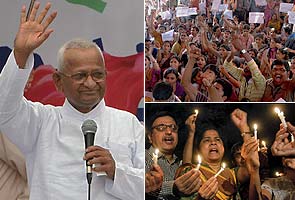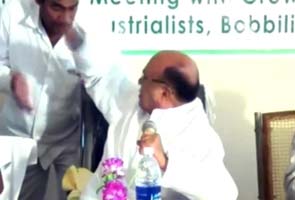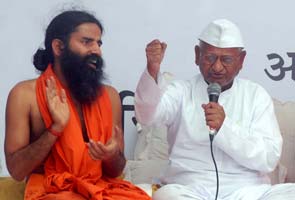Long Island: Whoever killed four prostitutes, and possibly four other people, and then dumped their bodies in heavy underbrush along a beachfront causeway on Long Island appears to have a sophisticated understanding of police investigative techniques, according to people briefed on the case.
A series of taunting phone calls made to the teenage sister of one of the victims -- calls that the police suspect came from the killer -- were made from in or around some of the most crowded locations in New York City, including Madison Square Garden and Times Square, according to the people briefed on the case and to the mother of Melissa Barthelemy, that victim.
The locations, detectives say, were probably chosen because they allowed the caller to blend into crowds, so that if investigators pinpointed his location from the cellphone's signal, they would be unable to pick him out of the crowd using any nearby surveillance cameras, one of the people said.
This fact, as well as the killer's use of disposable cellphones to contact the four victims who have been identified -- women in their 20s who advertised their services on Craigslist -- suggested to some investigators that the killer was well versed in criminal investigative techniques, gleaned either through personal experience or in some other way, and could even be in law enforcement himself.
"He is a guy who is aware of how we utilize technology," one investigator said. "Frankly, people are thinking maybe he could be a cop" -- either one still in law enforcement or one who has moved on.
"Without question, this guy is smart, this guy is not a dope," the investigator continued. "It's a guy who thinks about things."
Also, the caller kept each of his vulgar, mocking and insulting calls to less than three minutes, according to the dead woman's mother, Lynn Barthelemy. The caller made about a half-dozen calls over roughly five weeks to the victim's sister.
One investigator said the brief duration of the calls thwarted efforts by the New York Police Department to use the signal to pinpoint the caller's location and find him, something Lynn Barthelemy said they told her they tried to do four times.
New York investigators began those efforts about a week after Melissa Barthelemy, a 24-year-old who lived in the Bronx, disappeared around July 10, 2009.
The investigator, and several others, emphasized that the idea that the killer could be an active or former law enforcement officer was just one theory being examined by homicide investigators in Suffolk County, where the bodies were found.
The Suffolk Police Department's chief of detectives, Dominick Varrone, would say only, "Our investigative team is considering many theories and all possibilities."
The police commissioner, Richard Dormer, said in a statement late Friday that "no suspect has been identified in the Gilgo Beach homicides."
Ms. Barthelemy's body was one of four uncovered over the course of three days in December in the thick undergrowth along Ocean Parkway, near Gilgo Beach, in the town of Babylon. All were dumped in burlap sacks.
It is unclear whether the county medical examiner's office, working with its counterpart in New York City, has determined the causes of death in the four cases.
The discovery marked the third time in two decades that a serial killer of prostitutes had stalked Long Island.
After the snow melted, the Suffolk police intensified their search in the area. On March 29, a Marine Unit officer discovered a fifth set of remains, and two days later, three more sets of remains were found, more than a mile east of where the first bodies were found clustered.
Two officials briefed on the case said it appeared that those additional sets of remains had been dumped many years prior to those found in December, and there were no burlap sacks.
They said there were other differences that set them apart from the four bodies that have been identified, but they would not describe them.
Both of the officials suggested that the differences raised the possibility that remains found in the past two weeks -- the police have yet to identify them or even say whether they have determined the gender of the dead -- were unrelated to the four Craigslist women.
But they also said the differences could be ascribed to the development of the killer's technique over time.
On July 10 nearly two years ago, Ms. Barthelemy saw a client and then deposited $900 into her bank account, her mother said. That night she called an old boyfriend, but he did not pick up. Then she disappeared.
Melissa Barthelemy's teenage sister, Amanda, was preparing to fly to New York from Buffalo and visit with her sister, but the trip was called off because the family could not reach Melissa. Concerned, the Barthelemys pleaded with the New York police to help find her.
Then Amanda began to receive calls, about one each week, from her missing sister's cellphone. The voice on the other end was calm and bland, and never yelled or laughed, her mother said.
Lynn Barthelemy would not say what was said in those calls. She said the authorities told her not to disclose details so that they could use that information, which they believe only the killer would know, to weed out false confessions.
The family's lawyer, Steven M. Cohen of Buffalo, said the caller had made remarks that were "disparaging of the sister, because of her lifestyle."
"We can't for certain make the leap that the person who called the sister was the killer, although I believe that to be the case," Mr. Cohen said. "If you accept it was the killer calling, he certainly had feelings of anger towards prostitutes."
Lynn Barthelemy said detectives had told her they rushed to several locations during the calls, which never lasted more than three minutes, but were unable to identify a suspect.
In one instance, the police learned that Melissa Barthelemy's phone had been turned on near Massapequa, on Long Island, and that someone had gained access to her voice mail, the victim's mother said, but that happened only once.
The caller did not ever say that Ms. Barthelemy was dead or suggest that she was alive, Lynn Barthelemy said.
"He kept us hopeful," she said.
She still wonders what prompted the calls. It was as if he was "trying to finalize things," she said.


 In the movie "The Fight Club," Tyler Durden, the character played by Brad Pitt, says, "The first rule of fight club is you do not talk about fight club."
In the movie "The Fight Club," Tyler Durden, the character played by Brad Pitt, says, "The first rule of fight club is you do not talk about fight club."
 Twitter
Twitter NDTV Social
NDTV Social Gmail Buzz
Gmail Buzz

 In a move that could shake up the American solar industry, General Electric plans to announce on Thursday that it will build the nation's largest photovoltaic panel factory, with the goal of becoming a major player in the market.
In a move that could shake up the American solar industry, General Electric plans to announce on Thursday that it will build the nation's largest photovoltaic panel factory, with the goal of becoming a major player in the market.


 "I will focus on improving my batting during the tour. It has become really weak," Afridi told reporters here on Friday of the ODI series against the West Indies later this month.
"I will focus on improving my batting during the tour. It has become really weak," Afridi told reporters here on Friday of the ODI series against the West Indies later this month. New Delhi: Yoga guru Baba Ramdev today backed Anna Hazare's fight against corruption by visiting the site of the anti-corruption crusader's hunger strike here.
New Delhi: Yoga guru Baba Ramdev today backed Anna Hazare's fight against corruption by visiting the site of the anti-corruption crusader's hunger strike here.
 Batting maestro Sachin Tendulkar on Thursday said that Indian team's World Cup victory has had a huge impact on his son, Arjun, but he would not force him to become a cricketer.
Batting maestro Sachin Tendulkar on Thursday said that Indian team's World Cup victory has had a huge impact on his son, Arjun, but he would not force him to become a cricketer.